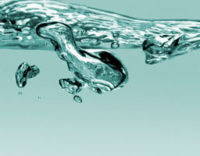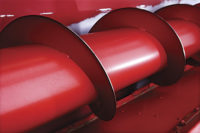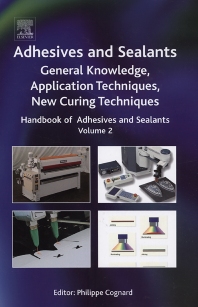2-Component Polyurethane Topcoats
Polyurethane coatings are used today as architectural
coatings, product finishes, automotive coatings and industrial maintenance
coatings, making them among the most versatile coating types available.(1)Polyurethane topcoats were introduced to the industrial maintenance and marine
market in the mid-1970s as part of a corrosion protection system. The topcoat
provides excellent weathering properties, i.e., good gloss retention and
non-yellowing characteristics upon exposure to sunlight. When used in a
basecoat/clearcoat combination, the weathering performance has been reported to
be outstanding.(2,3) They can also be formulated to provide good abrasion
resistance, hydrolytic stability and resistance to a variety of solvents and
chemicals. Polyurethane topcoats have evolved over the years into a coating
technology that can be formulated to give low-VOC coatings,
productivity-enhancing coatings,(4) and long-lasting, cost-effective
coatings.
In recent years, there have been reports of polyurethane topcoats experiencing a downward performance drift, primarily in regard to weathering.(5) Persistent market forces pushing down the cost of painting projects undoubtedly played a role. Coating formulators responded with formulation changes that reduced raw material costs, which in turn, resulted in lower-performing polyurethane paints. While still called polyurethanes, they can be inferior in performance to the original standard established in the 1970s.
The initial response to this reported performance drift was to establish a weathering performance specification for polyurethane topcoats. SSPC Paint Specification No. 36: Two-Component Weatherable Aliphatic Polyurethane Topcoat, Performance-Based(6) was approved in 2006 and established three performance levels (1, 2, and 3) for Accelerated UV-A/Condensation (ASTM D 4587 cycle 2) and South Florida Exposure (ASTM D 1014). This is helpful to both the end user/specifier and the coating formulator because it clarifies expectations.
However, there are calls for ultra-high weathering performance in some sectors of the industrial maintenance market, primarily sports facilities, but also water tanks and bridges, where the coating system is expected to provide aesthetic appeal along with corrosion protection.(7) Specifiers/end users are looking into alternative coating types, e.g., polysiloxanes(8) and fluoropolymers(9) in order to meet a much higher weathering performance standard than specified in Paint Spec No. 36, even though these coating types have inherently higher raw material costs compared to aliphatic polyurethanes.
Does Paint Spec. No. 36 go far enough in defining the highest level of polyurethane weathering performance? Are polyurethane topcoats capable of higher weathering performance than specified in Paint Spec. No. 36?
This paper compares some key formulating variables affecting the weathering performance of aliphatic polyurethane topcoats. Variables such as polyisocyanate index and resin selection are compared in an accelerated weathering study using a standard polyurethane topcoat formulation. The results are referenced to SSPC Paint Spec. No. 36, which is often used in the industrial maintenance and marine market to define performance criteria for polyurethane topcoats. Additionally, the polyurethane topcoats are tested out to extreme exposure time frames to illustrate how these high-quality polyurethane topcoats compare with alternative coating types that are often used as ultra-high performance standards with regard to weathering.
This paper addresses only one aspect of selecting a coating for use in an industrial maintenance application – accelerated weathering. The authors wish to note the importance of using multiple criteria in the coating selection process, e.g., natural weathering, application characteristics and cost, just to name a few.
HO-R-OH + OCN-R’-NCO à -(R-O-C(O)-NH-R’)n- Scheme 1
Polyurethane
H2N-R-NH2 + OCN-R’-NCO à -(R-NH-C(O)-NH-R’)n- Scheme 2
Polyurea
R-NCO + H2O à [RC(O)OH] à R-NH2 + CO2 h Scheme 3
Two-component polyurethane coatings, sometimes called two-package coatings, are probably the most commonly known of all the polyurethane coatings. Two-component describes a process in which there are two resin packages (often referred to as part A and part B) mixed immediately prior to application. One package contains a resin with reactive chemical groups (e.g., hydroxyls or amines); the other package contains a polyisocyanate resin capable of reacting with the chemical groups. The key advantage of the two-component coating is the theoretically infinite storage stability coupled with rapid curing reaction once the two resins are mixed.
Potential health risks associated with isocyanates have generated considerable discussion over the years. While there are real health hazards associated with exposure to isocyanates during the paint application process, these hazards are now well understood. Forty years of industry use has brought with it documented, safe handling practices and facts about the health risks.(10-12) As is the case when handling any chemical substance or coating, good hygiene practices and minimizing exposure to isocyanates is needed when working with polyurethane coatings. Industrial hygiene monitoring programs are especially helpful in verifying the safe use of polyurethane coatings.

The composition of the co-reactant plays a major role in determining the performance of a polyurethane coating. Figure 1 illustrates how using different polyacrylate polyols yields different weathering results for polyurethane topcoats. (For a review of all performance properties across various acrylic polyols see Reference 13.) In general, molecular weight (higher MW yields faster development of physical properties), hydroxyl content (higher OH content yields better weathering and chemical resistance), Tg (higher Tg yields faster physical drying and harder films); and chemical composition of the polyacrylate backbone (more styrene lowers cost and yields poorer weather resistance) all play a role in the application and performance polyurethane of the resulting polyurethane topcoat.
 A typical corrosion protection polyurethane topcoat
formulation is presented in Table 1. The basic elements of the formulation are:
binder (resin), pigments, solvents and additives. There are many potential
variables in a typical corrosion protection formulation that affect the
performance, application characteristics and cost structure of the coating. In
this paper we will concentrate on resin type and isocyanate/polyol index
(NCO/OH).
A typical corrosion protection polyurethane topcoat
formulation is presented in Table 1. The basic elements of the formulation are:
binder (resin), pigments, solvents and additives. There are many potential
variables in a typical corrosion protection formulation that affect the
performance, application characteristics and cost structure of the coating. In
this paper we will concentrate on resin type and isocyanate/polyol index
(NCO/OH).

 However, these topcoats are capable of achieving a
much higher performance standard. Going beyond the 2000 hours QUV A exposure
dictated by SSPC Paint Spec. No. 36 provides a little more insight into the
performance potential of polyurethane topcoats and how they might compare to
alternative coating types. Exposure data, 2000 and 5000 hours, for acrylic
urethane A and B are presented in Table 3. In addition to the longer exposure
data, Table 3 illustrates the improvement in weathering achieved by
over-indexing the formulation, i.e., the NCO/OH equivalent ratio is greater
than the standard 1.05 ratio. This practice of over-indexing the polyurethane
formulation is considered a dual curing mechanism – isocyanate/polyol cure
(Scheme 1) coupled with a moisture cure of the excess polyisocyanate (Scheme
3).
However, these topcoats are capable of achieving a
much higher performance standard. Going beyond the 2000 hours QUV A exposure
dictated by SSPC Paint Spec. No. 36 provides a little more insight into the
performance potential of polyurethane topcoats and how they might compare to
alternative coating types. Exposure data, 2000 and 5000 hours, for acrylic
urethane A and B are presented in Table 3. In addition to the longer exposure
data, Table 3 illustrates the improvement in weathering achieved by
over-indexing the formulation, i.e., the NCO/OH equivalent ratio is greater
than the standard 1.05 ratio. This practice of over-indexing the polyurethane
formulation is considered a dual curing mechanism – isocyanate/polyol cure
(Scheme 1) coupled with a moisture cure of the excess polyisocyanate (Scheme
3).
 Using the criteria of 25% loss of initial gloss set in
SSPC Paint Spec. No. 36, it is interesting to present the data in Table 3 in
the manner shown in Figure 2. The length of exposure time at which these
different topcoats cross the 25% gloss loss threshold is as follows:
Using the criteria of 25% loss of initial gloss set in
SSPC Paint Spec. No. 36, it is interesting to present the data in Table 3 in
the manner shown in Figure 2. The length of exposure time at which these
different topcoats cross the 25% gloss loss threshold is as follows:
· polysiloxane C = ~ 2300 hrs;
· urethane A = ~ 3800 hrs;
· polysiloxane B = ~ 5100 hrs;
· urethane A over-indexed ~ 6000 hrs;
· polysiloxane A = ~ 6200 hrs;
· urethane B = ~ 6600 hrs; and
· fluoropolymer – urethane crosslinked = greater than 10,000 hrs.
The urethane-crosslinked fluoropolymer outperforms, by far, all other topcoats in this accelerated weathering test – never crossing the 25% gloss loss threshold.
 Not
all polysiloxane coating types are created equal. Two of the three polysiloxane
topcoats appear capable of achieving 10,000 hours QUV A exposure without
complete loss of gloss. One of the three does not achieve SSPC Paint Spec. No.
36, level 3 performance with regard to delta E yellowing (Figure 3). Using
Paint Spec. No. 36 type criteria, the polyurethane topcoat formulations of this
study provide QUV A weathering performance that, in general, is comparable to
the three commercially available polysiloxanes used in this study.
Not
all polysiloxane coating types are created equal. Two of the three polysiloxane
topcoats appear capable of achieving 10,000 hours QUV A exposure without
complete loss of gloss. One of the three does not achieve SSPC Paint Spec. No.
36, level 3 performance with regard to delta E yellowing (Figure 3). Using
Paint Spec. No. 36 type criteria, the polyurethane topcoat formulations of this
study provide QUV A weathering performance that, in general, is comparable to
the three commercially available polysiloxanes used in this study.
However, this study raises the following questions.
· What exposure duration is appropriate for an accelerated weathering test?
· What level of gloss retention is appropriate for the industrial maintenance/marine market?
· How would these topcoats compare when exposed to natural weathering?
· Should Paint Spec. No. 36 be modified to include even higher levels of performance? Perhaps a level 4?
Formulation variations can also play a role, including isocyanate index. Specifically, over-indexing the isocyanate leads to considerable improvement in the QUV A weathering performance of the polyurethane topcoats of this study. It is expected that this would hold true for polyester urethane and polyaspartic topcoats.
Comparison of high-quality polyurethane topcoat formulations with some other coating types showed them to compare favorably to commercially available polysiloxanes in QUV A weathering performance. This study indicates that polysiloxane coatings are not all equal in QUV A weathering performance. Two of the three polysiloxane topcoats appear capable of achieving 10,000 hours QUV A exposure without complete loss of gloss; however, one of these does not meet delta E standards set in Paint Spec. 36.
The urethane-crosslinked fluoropolymer outperforms, by far, all other topcoats in this accelerated weathering test – never crossing the 25% gloss loss threshold criteria set by SSPC Paint Spec. No. 36. Delta E performance of this coating was also outstanding.
All of the polyurethane topcoats of this study met the highest QUV A performance level of SSPC Paint Spec. No. 36 with regard to loss of gloss and yellowing.
How does one come to a conclusion as to which topcoat performs better? It depends on how one defines better. The authors would like to suggest caution into reading too much into just one accelerated test method. This topcoat weathering study focuses on just one element of the coating selection process for a corrosion protection coating application. One must also consider 1) application characteristics of the paint, e.g., potlife/drytime, VOC levels, 2) corrosion performance as part of a multiple coat system, and 3) cost as part of a multiple coat system. Too much attention has been put on accelerated weathering results in recent years relative to these other important considerations.
One must also keep in mind the relevance of accelerated weathering versus natural weathering. The coatings of this study were also submitted for South Florida weathering and will be presented in the future when the results become available.
Acknowledgements
The authors would like to acknowledge the contributions of Ken Ferri, Sandy Zielinski and Joe Kleer for preparing the many paint formulations and conducting the weathering studies described in this article.
This paper was presented at PACE, January 2008, Los Angeles, CA.
In recent years, there have been reports of polyurethane topcoats experiencing a downward performance drift, primarily in regard to weathering.(5) Persistent market forces pushing down the cost of painting projects undoubtedly played a role. Coating formulators responded with formulation changes that reduced raw material costs, which in turn, resulted in lower-performing polyurethane paints. While still called polyurethanes, they can be inferior in performance to the original standard established in the 1970s.
The initial response to this reported performance drift was to establish a weathering performance specification for polyurethane topcoats. SSPC Paint Specification No. 36: Two-Component Weatherable Aliphatic Polyurethane Topcoat, Performance-Based(6) was approved in 2006 and established three performance levels (1, 2, and 3) for Accelerated UV-A/Condensation (ASTM D 4587 cycle 2) and South Florida Exposure (ASTM D 1014). This is helpful to both the end user/specifier and the coating formulator because it clarifies expectations.
However, there are calls for ultra-high weathering performance in some sectors of the industrial maintenance market, primarily sports facilities, but also water tanks and bridges, where the coating system is expected to provide aesthetic appeal along with corrosion protection.(7) Specifiers/end users are looking into alternative coating types, e.g., polysiloxanes(8) and fluoropolymers(9) in order to meet a much higher weathering performance standard than specified in Paint Spec No. 36, even though these coating types have inherently higher raw material costs compared to aliphatic polyurethanes.
Does Paint Spec. No. 36 go far enough in defining the highest level of polyurethane weathering performance? Are polyurethane topcoats capable of higher weathering performance than specified in Paint Spec. No. 36?
This paper compares some key formulating variables affecting the weathering performance of aliphatic polyurethane topcoats. Variables such as polyisocyanate index and resin selection are compared in an accelerated weathering study using a standard polyurethane topcoat formulation. The results are referenced to SSPC Paint Spec. No. 36, which is often used in the industrial maintenance and marine market to define performance criteria for polyurethane topcoats. Additionally, the polyurethane topcoats are tested out to extreme exposure time frames to illustrate how these high-quality polyurethane topcoats compare with alternative coating types that are often used as ultra-high performance standards with regard to weathering.
This paper addresses only one aspect of selecting a coating for use in an industrial maintenance application – accelerated weathering. The authors wish to note the importance of using multiple criteria in the coating selection process, e.g., natural weathering, application characteristics and cost, just to name a few.
Polyurethane Coating Chemistry
The chemistry of the isocyanate group (-N=C=O) provides the fundamental basis of polyurethane coatings chemistry. Its high chemical reactivity, coupled with its ability to react with many different chemical partners, makes the isocyanate group particularly suited for the coatings market. The isocyanate group can react with any compound having a reactive hydrogen, for example an alcohol (R-OH), an amine (R-NH2) and even water (H2O). These three reactions (shown in Schemes 1-3) are of principle interest. There are a wide variety of hydroxyl and/or amine-containing raw materials (often called polyols or co-reactants) available for reaction with isocyanate containing raw materials.HO-R-OH + OCN-R’-NCO à -(R-O-C(O)-NH-R’)n- Scheme 1
Polyurethane
H2N-R-NH2 + OCN-R’-NCO à -(R-NH-C(O)-NH-R’)n- Scheme 2
Polyurea
R-NCO + H2O à [RC(O)OH] à R-NH2 + CO2 h Scheme 3
Two-component polyurethane coatings, sometimes called two-package coatings, are probably the most commonly known of all the polyurethane coatings. Two-component describes a process in which there are two resin packages (often referred to as part A and part B) mixed immediately prior to application. One package contains a resin with reactive chemical groups (e.g., hydroxyls or amines); the other package contains a polyisocyanate resin capable of reacting with the chemical groups. The key advantage of the two-component coating is the theoretically infinite storage stability coupled with rapid curing reaction once the two resins are mixed.
Polyisocyanates
A polyurethane coating is often characterized by the type of polyisocyanate incorporated into the paint (i.e., aromatic or aliphatic). The key distinctions are that aromatic polyisocyanates (e.g., toluene diisocyanate [TDI] and methylene diphenyl diisocyanate [MDI]-derived polyisocyanates) are typically less expensive. Aliphatic polyisocyanates (e.g., hexamethylene diisocyanate [HDI], isophorone diisocyanate [IPDI] and H12MDI-derived polyisocyanates) have much better outdoor weathering characteristics, i.e., excellent retention of color and gloss; whereas, polyurethane coatings based on aromatic diisocyanates tend to yellow in sunlight. Because of this critical difference in light stability, aromatic polyisocyanates are normally used in primer and intermediate layer coatings. Aliphatic polyisocyanates are primarily used in outdoor topcoat applications when gloss and color retention are required.Potential health risks associated with isocyanates have generated considerable discussion over the years. While there are real health hazards associated with exposure to isocyanates during the paint application process, these hazards are now well understood. Forty years of industry use has brought with it documented, safe handling practices and facts about the health risks.(10-12) As is the case when handling any chemical substance or coating, good hygiene practices and minimizing exposure to isocyanates is needed when working with polyurethane coatings. Industrial hygiene monitoring programs are especially helpful in verifying the safe use of polyurethane coatings.

Co-Reactants
Co-reactants represent the second part of a two-component polyurethane coating. They must have at least two reactive hydrogens present to obtain polymerization. When either the co-reactant or the polyisocyanate has more than two reactive sites, a crosslinked, thermoset polymer is formed. Greater crosslinking results in a harder and more chemically resistant polymer. Co-reactants are generally characterized by their backbone chemistries, which can be polyester, polyacrylate (acrylic), polyether, vinyl, fluoro, polyaspartic, or even epoxy. The most commonly used in the industrial maintenance and marine area are polyester, polyacrylic and polyaspartic-type polyurethane topcoats.The composition of the co-reactant plays a major role in determining the performance of a polyurethane coating. Figure 1 illustrates how using different polyacrylate polyols yields different weathering results for polyurethane topcoats. (For a review of all performance properties across various acrylic polyols see Reference 13.) In general, molecular weight (higher MW yields faster development of physical properties), hydroxyl content (higher OH content yields better weathering and chemical resistance), Tg (higher Tg yields faster physical drying and harder films); and chemical composition of the polyacrylate backbone (more styrene lowers cost and yields poorer weather resistance) all play a role in the application and performance polyurethane of the resulting polyurethane topcoat.


Comparison Weathering Study Results
A variety of different polyurethane topcoats were tested using the SSPC Paint Spec. No. 36 criteria as a basis for comparing weathering performance. Gloss retention and the degree of yellowing for a polyester urethane topcoat and two different polyacrylic polyurethane topcoats upon QUV A exposure are reported in Table 2. All three of the polyurethane topcoats in Table 2 pass level 3 performance criteria – the highest level of performance – of SSPC Paint Spec. No. 36.

· polysiloxane C = ~ 2300 hrs;
· urethane A = ~ 3800 hrs;
· polysiloxane B = ~ 5100 hrs;
· urethane A over-indexed ~ 6000 hrs;
· polysiloxane A = ~ 6200 hrs;
· urethane B = ~ 6600 hrs; and
· fluoropolymer – urethane crosslinked = greater than 10,000 hrs.
The urethane-crosslinked fluoropolymer outperforms, by far, all other topcoats in this accelerated weathering test – never crossing the 25% gloss loss threshold.

However, this study raises the following questions.
· What exposure duration is appropriate for an accelerated weathering test?
· What level of gloss retention is appropriate for the industrial maintenance/marine market?
· How would these topcoats compare when exposed to natural weathering?
· Should Paint Spec. No. 36 be modified to include even higher levels of performance? Perhaps a level 4?
Conclusions/Putting it into Perspective
The QUV A weathering performance of polyurethane topcoats can vary depending on the choice of raw materials. High-quality acrylic co-reactants used in polyurethane topcoat formulations can significantly outperform low-cost acrylic polyurethanes.Formulation variations can also play a role, including isocyanate index. Specifically, over-indexing the isocyanate leads to considerable improvement in the QUV A weathering performance of the polyurethane topcoats of this study. It is expected that this would hold true for polyester urethane and polyaspartic topcoats.
Comparison of high-quality polyurethane topcoat formulations with some other coating types showed them to compare favorably to commercially available polysiloxanes in QUV A weathering performance. This study indicates that polysiloxane coatings are not all equal in QUV A weathering performance. Two of the three polysiloxane topcoats appear capable of achieving 10,000 hours QUV A exposure without complete loss of gloss; however, one of these does not meet delta E standards set in Paint Spec. 36.
The urethane-crosslinked fluoropolymer outperforms, by far, all other topcoats in this accelerated weathering test – never crossing the 25% gloss loss threshold criteria set by SSPC Paint Spec. No. 36. Delta E performance of this coating was also outstanding.
All of the polyurethane topcoats of this study met the highest QUV A performance level of SSPC Paint Spec. No. 36 with regard to loss of gloss and yellowing.
How does one come to a conclusion as to which topcoat performs better? It depends on how one defines better. The authors would like to suggest caution into reading too much into just one accelerated test method. This topcoat weathering study focuses on just one element of the coating selection process for a corrosion protection coating application. One must also consider 1) application characteristics of the paint, e.g., potlife/drytime, VOC levels, 2) corrosion performance as part of a multiple coat system, and 3) cost as part of a multiple coat system. Too much attention has been put on accelerated weathering results in recent years relative to these other important considerations.
One must also keep in mind the relevance of accelerated weathering versus natural weathering. The coatings of this study were also submitted for South Florida weathering and will be presented in the future when the results become available.
Acknowledgements
The authors would like to acknowledge the contributions of Ken Ferri, Sandy Zielinski and Joe Kleer for preparing the many paint formulations and conducting the weathering studies described in this article.
This paper was presented at PACE, January 2008, Los Angeles, CA.
Looking for a reprint of this article?
From high-res PDFs to custom plaques, order your copy today!
Pictures
December 31, 2019
Hello,
I can't access to the tables and pictures is it normal ? I would be grateful if someone could give me the links or tell me how to get them in good quality.
Yann B.
Figures in article
January 2, 2020
I will see if we have the pdf of the article that I can email to you. I apologize for the small size of the figures in this article. When we switched over to our new web platform a few years ago, many of our older articles didn't transfer over correctly.
Email pdf copy of article
October 29, 2020
Thanks for the article. Really interesting facts. I to would like a pdf copy of the article so I can access the picture's, if that's still possible.
Thanks in advance!
Picture accessibility
December 21, 2020
Great article! I too would like to be able to access the images. Please send email if possible.
Thank you.
Figures unreadable
December 6, 2021
Can you please forward my email the pdf version so I can review the figures referenced in this article? Thank you!!! MCB







